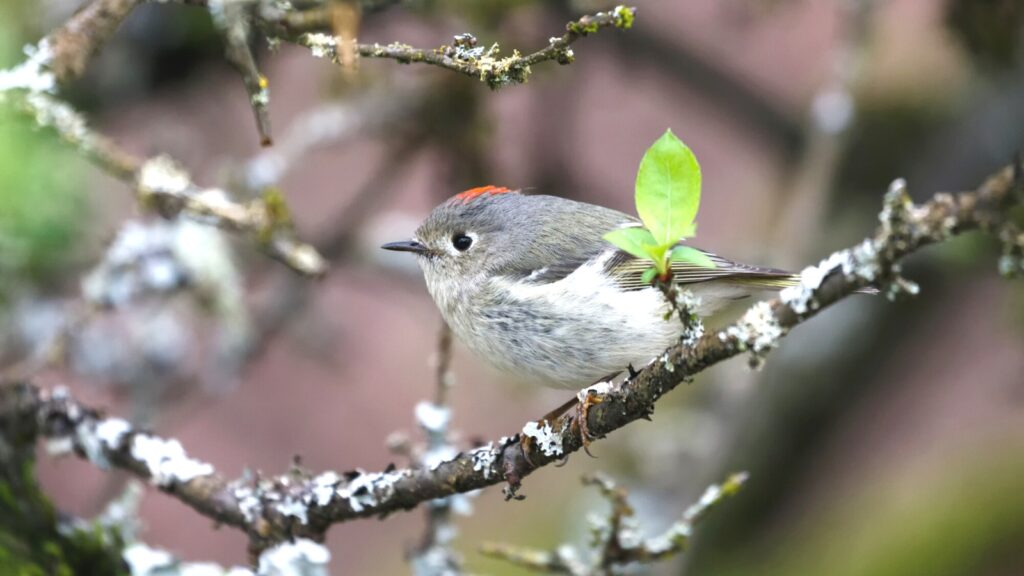You’re not the only one who enjoys Florida’s seemingly endless sunshine! This gorgeous state is home to several small bird species that are seen year-round or pretty frequently.
With so much access to lush forests and long beaches, Florida is unsurprisingly home to a diverse array of bird species. You’re just as likely to find a wren flitting about the marshlands as you are to find colorful finches.
We’ll help you find all sorts of small bird species with the handy list below – 22, to be exact! You’ll learn how to spot these birds not just by appearance, but their feeding behaviors or their unique birdcall.
White-Eyed Vireo
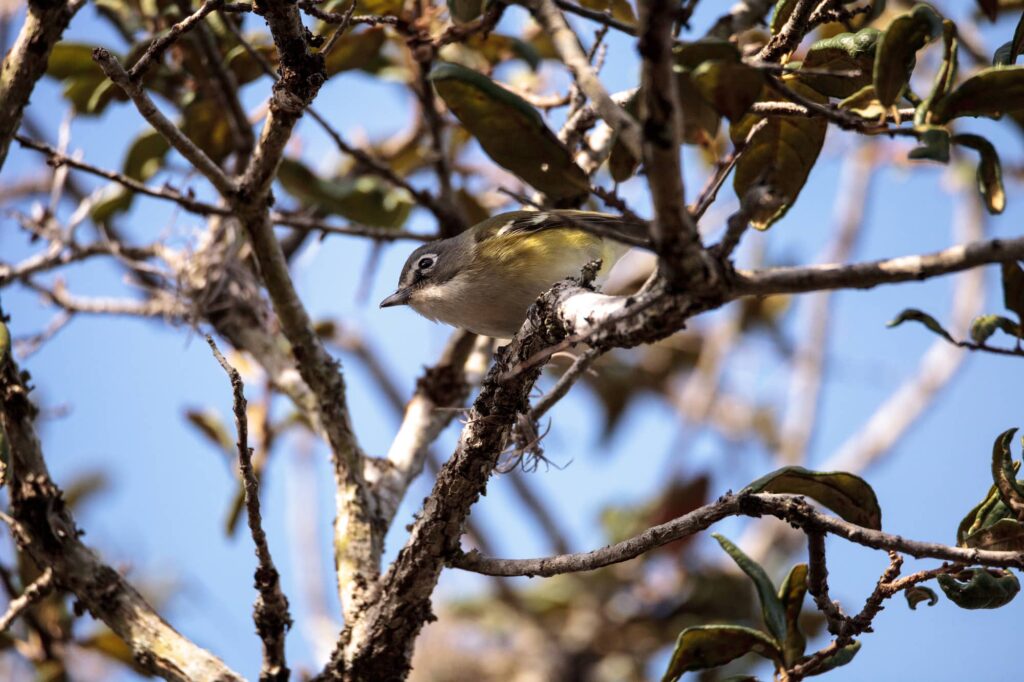
- Species Name: Vireo griseus
- Length: 11 cm to 13 cm
- Weight: 10 grams to 14 grams
- Wingspan: 17 cm
The white-eyed vireo is a common sight throughout Florida year-round.
The white-eyed vireo makes it very clear where it got its name. This unique bird has a light yellow body with an olive green back, dark gray wings, and a black beak.
Its most distinctive feature is the yellow band across its face as well as its white iris. Males and females look very similar, confusing even experienced birdwatchers.
These little songbirds are often elusive, preferring to duck and dip in overgrown shrubbery to stay safe. They have a unique call composed of six to seven rising and dipping warbles that end abruptly.
If you’re quiet and patient, and visit areas with heavy thickets or shrubbery, you may catch glimpses of these unique songbirds. Their insect-heavy diet means they’re less likely to visit a feeder, but they may feel comfortable in an overgrown backyard with plenty of places to hide.
Eastern Towhee
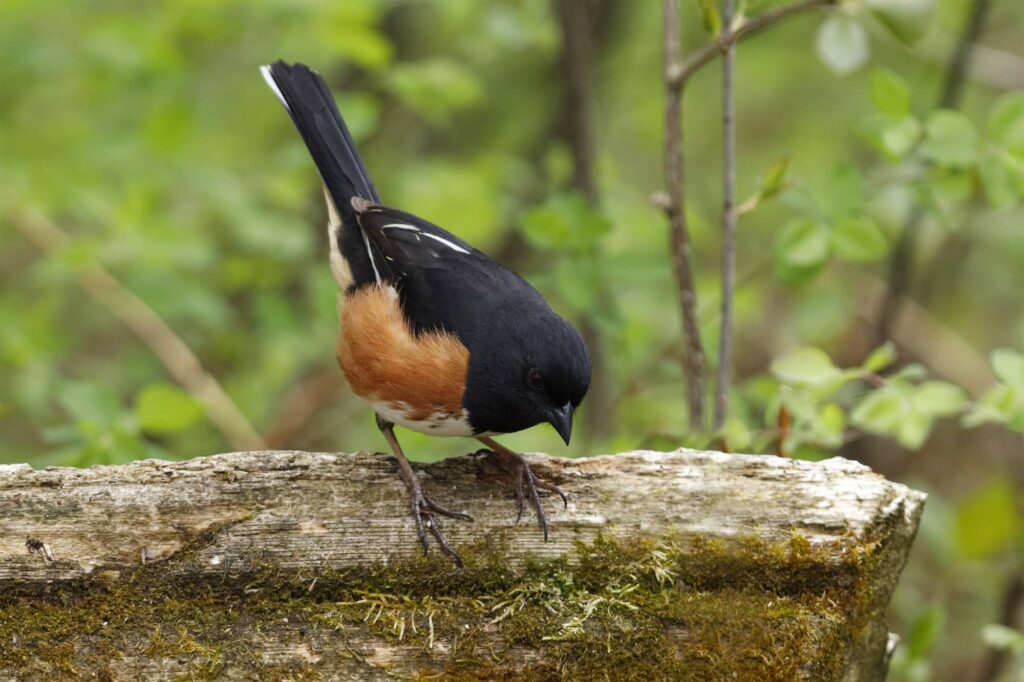
- Species Name: Pipilo erythrophthalmus
- Length: 17 cm to 20 cm
- Weight: 32 grams to 52 grams
- Wingspan: 20 cm to 28 cm
Eastern towhee regularly show up in Florida year-round and have a distinctive call, to boot.
The Eastern towhee is a brilliant bird with plumage that stands out stark against foliage. Males have an inky black head and chest, a white belly, and a streak of bronze along their sides.
Females look similar but lean toward a dusky gray-brown head and cinnamon-brown sides.
You’ll easily find these birds in a variety of environments such as marshlands, forests, forest edges, weedy fields, and occasionally overgrown backyards. Their diet reflects their adaptability – they’ll eat berries, seeds, snakes, and lizards.
Eastern towhees are known for a unique call that roughly sounds like chee-urr-wheee. Some birders think it sounds like ‘drink your tea’.
Ruby-Crowned Kinglet

- Species Name: Corthylio calendula
- Length: 9 cm to 11 cm
- Weight: 5 grams to 10 grams
- Wingspan: 16 cm to 18 cm
Ruby-crowned kinglets show up throughout most of Florida during non-breeding season, though they’re pretty scarce in the south.
The male ruby-crowned kinglet is a showstopper, boasting a vivid red headcrest and a light gray body. He has darker gray wings with thin white wing bars.
The female ruby-crowned kinglet is easy to confuse for juvenile males due to sharing olive green coloration and no headcrest.
Don’t expect to find these birds in great numbers in neighborhoods or backyards – they prefer to stick to heavy forests. They usually eat insects, though they’ll occasionally switch to spiders.
If you’re patient and stock up your bird feeder with suet during the winter months, you may glimpse a few here and there.
Prairie Warbler
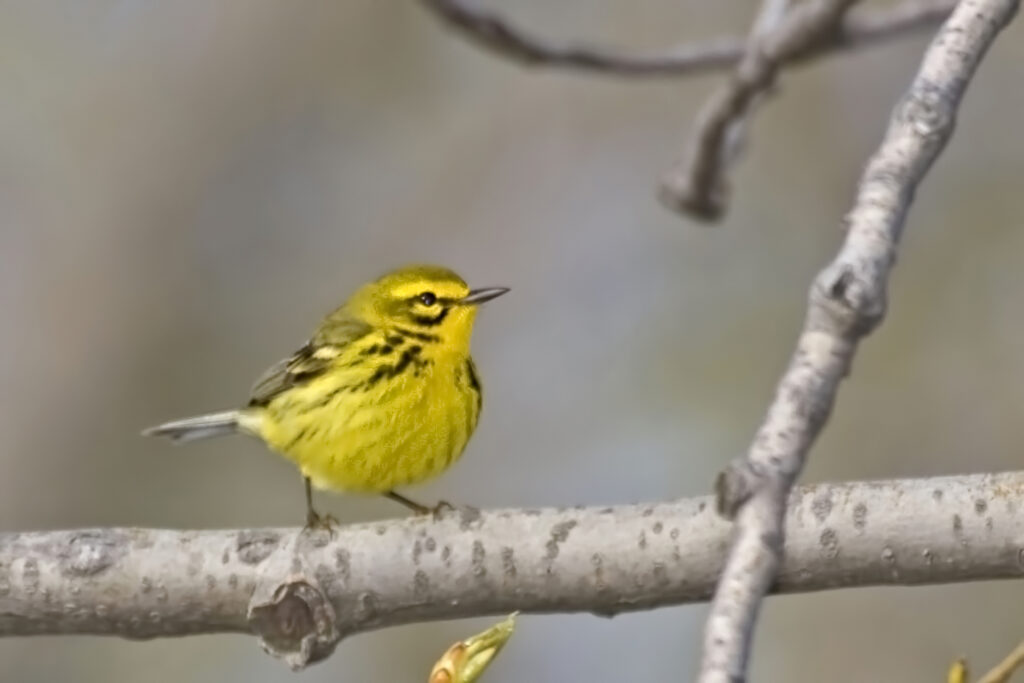
- Species Name: Setophaga discolor
- Length: 11 cm
- Weight: 6 grams to 8 grams
- Wingspan: 19 cm
Prairie warblers appear in central and southern Florida year-round but only occasionally show up in northern Florida during breeding season.
This tiny bird is a delight for many birders thanks to their vibrant feathers. Males have a lemon yellow face and chest with an olive green body and streaked wings.
Females look similar, but have a light gray head and a little less streaking.
The prairie warbler has a somewhat misleading name, as they actually prefer forested areas. They live on an insect-heavy diet and have a unique way of wagging their tails that’ll help you spot them at a distance.
Downy Woodpecker

- Species Name: Dryobates pubescens
- Length: 14 cm to 18 cm
- Weight: 20 grams to 33 grams
- Wingspan: 25 cm to 31 cm
The downy woodpecker is a frequent sight in Florida and shows up in the state year-round.
Downy woodpeckers are striking birds (pun intended), boasting black bodies and black wings with heavy white streaks. The males have a bold red spot on the sides of their heads, while females have none.
If you’re a fan of hiking or strolling around the park, you’ll likely hear a downy woodpecker well before you see one. They spend much of their time drilling trees to create a nest or find insects.
For those who’d rather stay home, try attracting downy woodpeckers to your backyard with black oil sunflower seeds or suet (especially in the winter).
Red-Winged Blackbird

- Species Name: Agelaius phoeniceus
- Length: 17 cm to 24 cm
- Weight: 29 grams to 82 grams
- Wingspan: 31 cm to 40 cm
Red-winged blackbirds are a common sight in Florida and show up year-round.
You won’t need to whip out your birdwatching book to recognize the red-winged blackbird. Male red-winged blackbirds are inky black with a bold red and yellow patch on their wings.
Female red-winged blackbirds are completely different in their mottled brown and cream plumage. They have a thick white streak over their eye and a narrow beak.
These birds enjoy spacious areas such as fields, meadows, and marshlands. They have one of the most diverse diets on this list, eating a mixture of snails, weed seeds, spiders, grains, and berries.
You’ll have no trouble attracting these birds to your backyard with a suet feeder or commercial birdseed.
Carolina Wren

- Species Name: Thryothorus ludovicianus
- Length: 12 cm to 14 cm
- Weight: 18 grams to 23 grams
- Wingspan: 29 cm
This charming little bird is found in Florida year-round.
The Carolina wren is so round as to appear ball-like, boasting cinnamon-brown coloration with barred wings. They have a characteristically thin, needle-like beak and a thick white eyebrow stripe.
In typical wren fashion, males and females look extremely similar.
Carolina wrens are determined foragers who usually keep to the ground, diving out of burrows and rummaging through leaves for insects. They have a call that sounds like chwee-er-er chwee-er-er, which some birders say sounds like ‘tea kettle, tea kettle’.
You can attract them with suet in the winter or with a nest box filled with grass in the summer.
House Wren
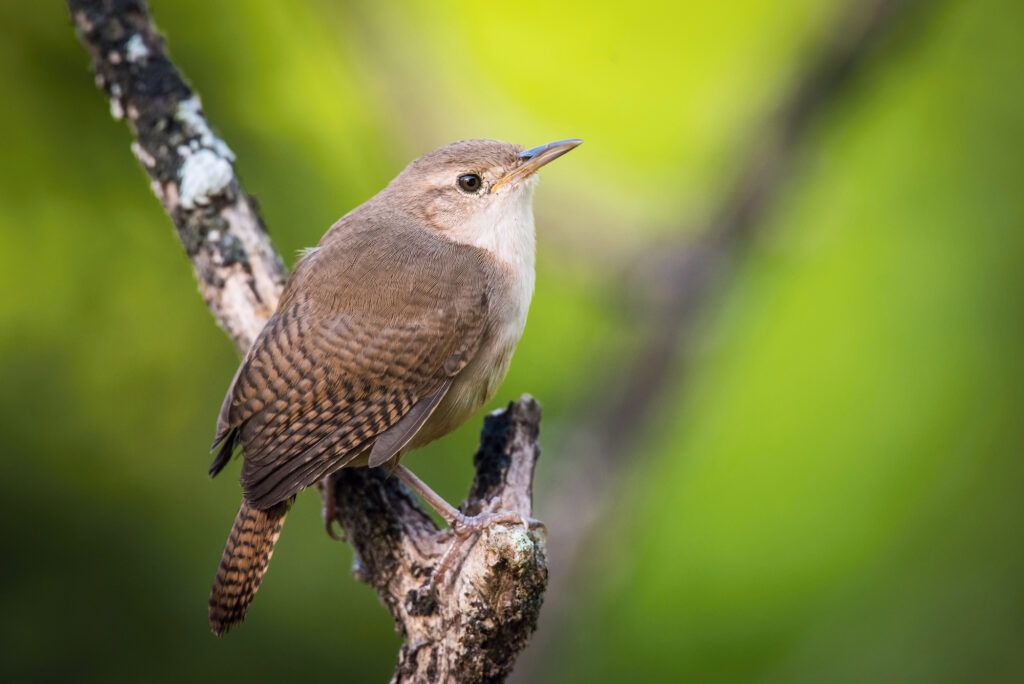
- Species Name: Troglodytes aedon
- Length: 11 cm to 13 cm
- Weight: 10 grams to 12 grams
- Wingspan: 15 cm
House wrens are a common sight during non-breeding season, but they head north once spring arrives.
Don’t be surprised if you get the house wren and the Carolina wren confused. While these birds have a similar shape and size, house wrens have grayer coloring and light flecking all over.
House wrens are comfortable around humans, often scurrying around backyards, gardens, and parks for places to nest or food to eat. They’re quite fond of spiders and earwigs, so they’ll do wonders to keep the area around your home low on insects.
You can attract house wrens not with traditional backyard feeders, but with piles of leaves or little nest boxes. There are several more species of wren you can spot in Florida (though some will be quite the challenge!).
Tree Swallow

- Species Name: Tachycineta bicolor
- Length: 12 cm to 14 cm
- Weight: 17 grams to 25 grams
- Wingspan: 30 cm to 35 cm
The elegant tree swallow shows up in most of Florida during non-breeding season but usually passes through northwestern Florida during migration.
Is it any wonder why the tree swallow captures the hearts and minds of so many birdwatchers? Their long, graceful wings and tails are only matched by their brilliant plumage.
Males have a shimmery blue body with a white belly, while females are hazy gray with a similar white belly.
Tree swallows like to stick near bodies of water, so you’ll often find them near marshlands, swamps, lakes, or rivers. They usually eat insects, though they occasionally eat vegetable matter.
Their birdsong is a series of short, bubbly chirps. You can increase your chances of glimpsing one by setting up a nest box in your backyard.
Tufted Titmouse

- Species Name: Baeolophus bicolor
- Length: 14 cm to 16 cm
- Weight: 17 grams to 26 grams
- Wingspan: 20 cm to 26 cm
These darling little birds show up in most of Florida year-round but are scarce to non-existent in the southernmost portion of the state.
Tufted titmice are one of the most popular songbirds around. They have a light gray body, white belly, and a dusting of cinnamon brown on their sides.
With their flared gray crest and tiny black beak, they look permanently curious. Males and females look similar, though males are larger.
You’ll have no trouble spotting tufted titmice since they love to visit gardens, parks, and people’s backyards. They enjoy all sorts of food ranging from berries to insects to seeds.
Try attracting them to your feeder with sunflower seeds, suet, or a handful of peanuts. They’re just as likely to use a tube feeder as they are a platform feeder – they also don’t mind flocking with other birds, like chickadees.
Eastern Phoebe

- Species Name: Sayornis phoebe
- Length: 14 cm to 17 cm
- Weight: 16 grams to 21 grams
- Wingspan: 26 cm to 28 cm
Eastern phoebes are plentiful throughout Florida during non-breeding season and promptly head up north once it’s time to breed.
These shy little birds are a delight for many birdwatchers thanks to their quaint movements and soft coloration. Eastern phoebes have a light brown body, a white body, and a very round shape.
They usually eat flying insects, but will sometimes eat spiders when their primary food supply gets low. They earned their name due to their distinctive fee-bee fee-bee call.
Since Eastern phoebes prefer insects, they’re not often found at backyard feeders. However, dedicated backyard birders may be able to attract them with a nest box.
Blue-Gray Gnatcatcher
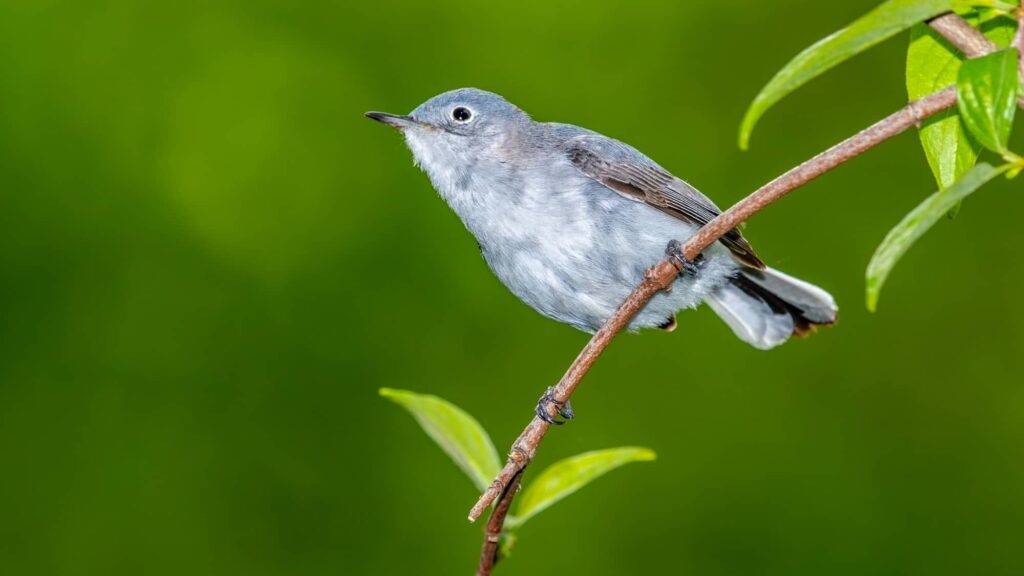
- Species Name: Polioptila caerulea
- Length: 10 cm to 11 cm
- Weight: 4 grams to 8 grams
- Wingspan: 16 cm
Blue-gray gnatcatchers show up throughout most of Florida year-round but are scarce in the south except for non-breeding season.
If you’re curious about what other tiny songbirds are waiting in the wings, you’ll love the blue-gray gnatcatcher. These round little birds have light gray bodies, wispy white stomachs, and a straight black tail.
While males and females look similar, males develop a distinctive black ‘V’ marking over their eyes. In other words, they look like they’re scowling (and are far more cute than threatening).
Blue-gray gnatcatchers earned their name for their love of insects, particularly flying species. They usually frequent heavy forests and shrubby fields where there’s plenty of food.
Their call almost sounds like a human trying and failing to whistle, composed of wheezing tzweee-ee-ee patterns.
Carolina Chickadee

- Species Name: Poecile carolinensis
- Length: 10 cm to 11 cm
- Weight: 4 grams to 8 grams
- Wingspan: 16 cm
The Carolina chickadee is common in northern Florida year-round, but very scarce to non-existent in the rest of the state.
The Carolina chickadee is another tiny charmer for your birdwatching list, boasting a chubby body and rounded heads that make them look youthful. They have light gray-blue plumage, white stomachs, and a distinctive black cap and throat.
This adorable songbird has a quaint feeding pattern, sometimes perching upside down or hovering to get the best angle on an insect. They occasionally eat seeds and fruits once the summer months arrive.
These birds earned their name due to their call that sounds like chik-a-dee-dee-dee, chik-a-dee-dee-dee. You can easily attract them to your backyard with peanuts, black oil sunflower seeds, or suet.
Pine Warbler
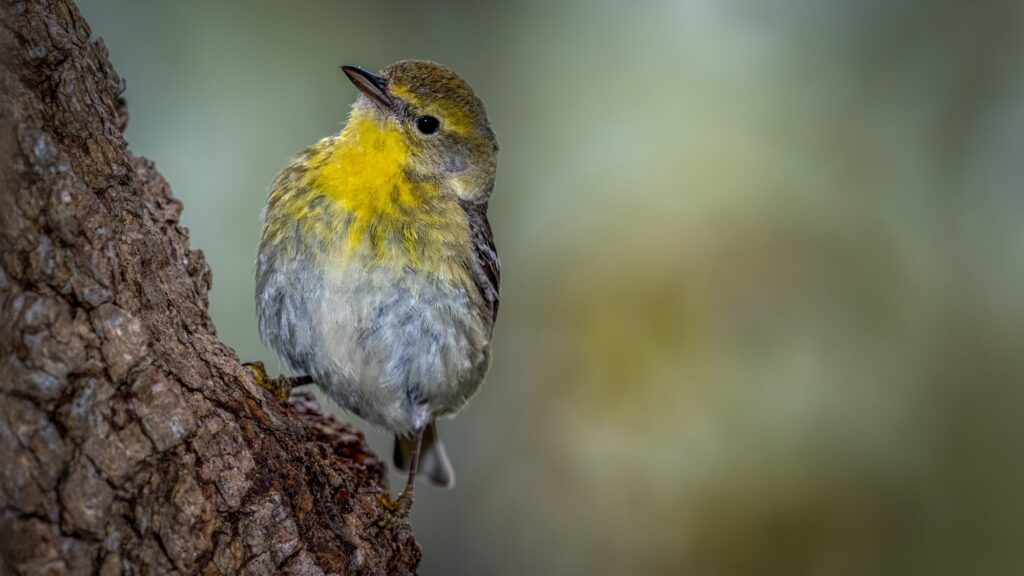
- Species Name: Setophaga pinus
- Length: 13 cm to 14 cm
- Weight: 12 grams
- Wingspan: 19 cm to 23 cm
The pine warbler is found throughout most of Florida year-round but is scarce in the southern portion of the state.
The male pine warbler is a vivid bird with yellow plumage, olive wings, and a tiny, dark beak. His wings are a deep olive with black stripes and two white wingbars.
Females look similar but with less yellow and thinner wingbars.
Their usual habitat is, you guessed it, dense pine forests with plenty of pine trees. While they usually eat seeds, they’ll switch to a wide variety of fruits, insects, and spiders when the time calls for it.
They love to score an easy meal, so try inviting them to your backyard with staples like suet or millet.
Eastern Bluebird

- Species Name: Sialia sialis
- Length: 16 cm to 21 cm
- Weight: 27 grams to 34 grams
- Wingspan: 25 cm to 32 cm
If you’re in northern Florida, you’ll see Eastern bluebirds year-round. However, these birds are scarce to non-existent in the central and southern portions of the state.
The dashing Eastern bluebird frequents many birders’ checklists. Males have a pop of blue on their heads and backs with a white stomach and brown chest.
Females look similar to males but favor a soft gray-blue and a paler cream-brown along their chest.
If you enjoy scenic walks through meadows or near fields, you’ll see plenty of these birds foraging for food. They’re also known to frequent golf courses, so add that to your birding list if you like to multitask.
For backyard birders, your best bet to attract them is to stock up on mealworms or set up a nesting box.
European Starling
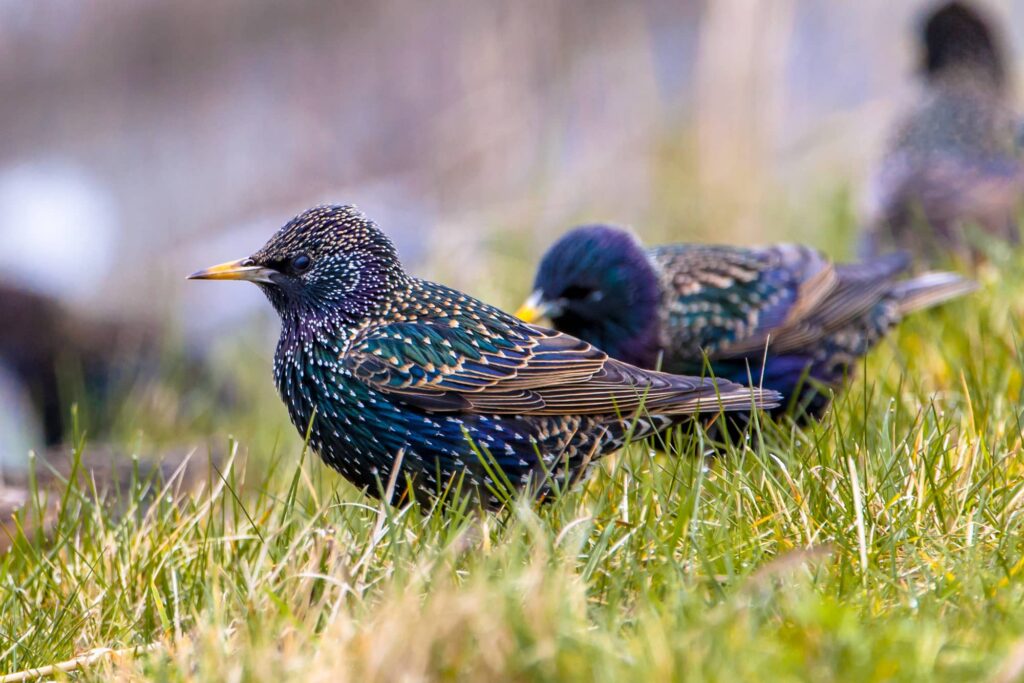
- Species Name: Sturnus vulgaris
- Length: 19 cm to 23 cm
- Weight: 58 grams to 101 grams
- Wingspan: 31 cm to 44 cm
This distinctive bird is easily found throughout Florida all year long.
Also known as the common starling, the European starling is a memorable bird. Their dark bodies are iridescent, shifting from purple to green to blue when the light touches them.
They have distinctive white-tipped body feathers that make them look like they’re glittering. Males and females look very similar, with the major difference being their beaks – males have blue tips while females have pink tips.
European starlings are adaptable and bold birds, just as likely to visit distant fields as they are to visit cities. They travel in very large flocks and primarily eat insects like grasshoppers, moths, and beetles.
If you want to attract a few starlings to your feeder, try using suet or peanuts. Just be mindful that they tend to bring their friends and will deplete your storage very quickly.
Northern Cardinal

- Species Name: Cardinalis cardinalis
- Length: 21 cm to 23 cm
- Weight: 42 grams to 48 grams
- Wingspan: 25 cm to 31 cm
This iconic bird is easily spotted throughout Florida year-round.
You won’t want to miss the opportunity to snap a photo of this gorgeous songbird. Males are well-known for their tomato-red coloration, lengthy tails, tufted heads, and black facebands.
Females are stunning in their own right, blending light orange with golden yellow alongside a tall red tuft. Both species have round, pink bills and a squat frame.
Expect to find these songbirds frequenting open spaces such as shrubby fields, spacious parks, and occasionally wetlands. One of their many distinctive songs sounds like sweet-sweet-doe-doe-doe.
Northern cardinals are quite excited to visit backyard feeders and will enjoy several staples such as sunflower seeds and millet.
Yellow-Throated Warbler
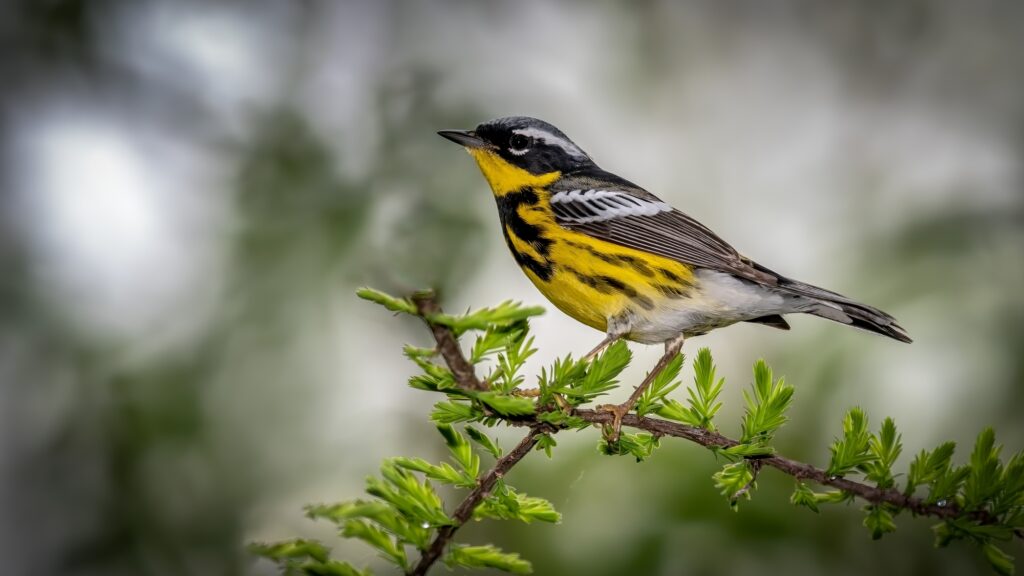
- Species Name: Setophaga dominica
- Length: 13 cm to 14 cm
- Weight: 9 grams to 11 grams
- Wingspan: 21 cm
You’ll find quite a few yellow-throated warblers in northern to central Florida year-round, but they’re only seen during breeding season in the southern part of the state.
When you want to glimpse a bold bird, the yellow-throated warbler’s striking plumage is a good pick. Males have speckled black, gray, and white bodies with a distinctive yellow throat.
Both females and immature males look similar to males but with more muted coloration.
Expect to find these beautiful birds in forested or swampy areas. They usually eat insects, but sometimes eat a mixture of berries and nectar.
These birds have a high and sharp call of chirps and whistles. They use backyard feeders only rarely, but are more likely to visit backyards with high trees – they enjoy resting in canopies.
Yellow-Rumped Warbler

- Species Name: Setophaga coronata
- Length: 12 cm to 15 cm
- Weight: 12 grams
- Wingspan: 19 cm to 24 cm
While the yellow-rumped warbler is a common sight throughout Florida during non-breeding season, these migratory birds become scarce to non-existent once spring arrives.
The yellow-rumped warbler is similar to the yellow-throated warbler but with a few key differences. The former has a grayer body with patches of yellow on its sides and rump.
Outdoor birders will have an advantage here, as yellow-rumped warblers are fond of coniferous forests where they can forage and hide. They’re also sometimes spotted on beaches picking at seaweed.
These little birds often eat insects, though they occasionally switch to berries – they’re well-known for being the only member of their species able to digest wax myrtles.
Not in the mood for a long walk? Try attracting yellow-rumped warblers to your backyard with suet or mealworms – they’re on the shy side, so you’ll have to be patient to see common visitors.
Gray Catbird
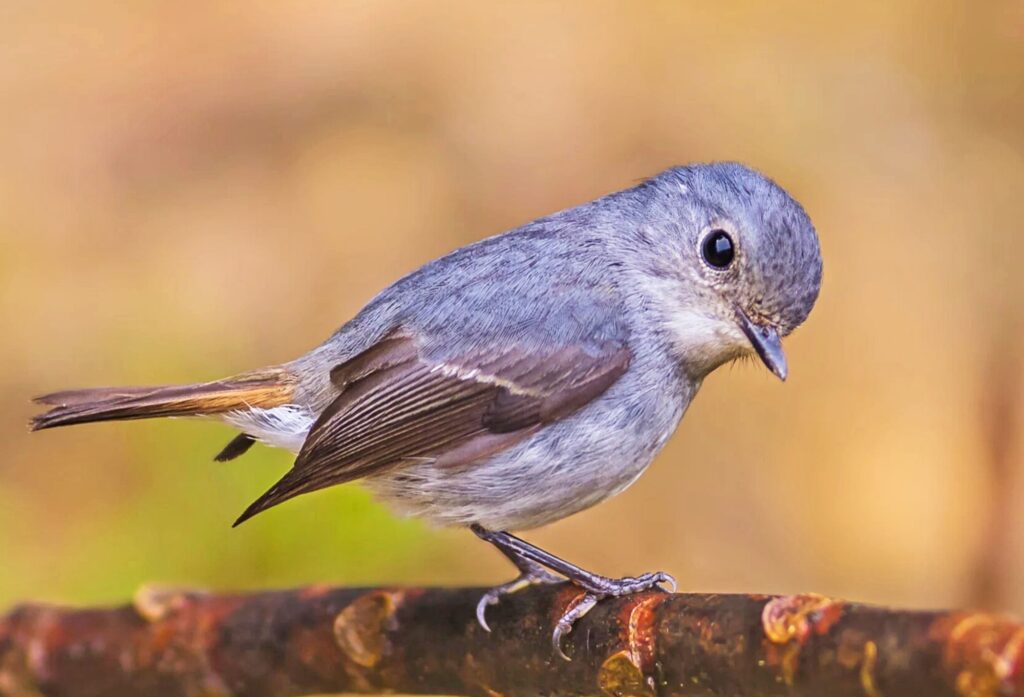
- Species Name: Dumetella carolinensis
- Length: 20 cm to 24 cm
- Weight: 23 grams to 56 grams
- Wingspan: 22 cm to 30 cm
You’ll see plenty of gray catbirds throughout most of Florida during non-breeding season, though they are year-round residents in the northernmost part of the state.
These birds almost appear dove-like with their light gray bodies, sleek forms, and dainty beaks. They’re also known as the slate-colored mockingbird.
The gray catbird earned its name for its cat-like call – alongside a series of warbles and trills, they sometimes let out a meeew that sounds just like a housecat that wants attention.
These quaint little birds enjoy visiting orchards, forest edges, and farmland. They switch between insects and berries, often preferring a mixture of earthworms, moths, blackberries, and cherries.
You may be able to attract a gray catbird with mealworms or some fresh berries.
Common Yellowthroat

- Species Name: Geothlypis trichas
- Length: 11 cm to 13 cm
- Weight: 9 grams to 10 grams
- Wingspan: 15 cm to 19 cm
The common yellowthroat is extremely common throughout Florida year-round.
With a round body and distinctive pattern, the common yellowthroat never fails to amaze despite its plentiful numbers. Males have a dark brown back, black mask, and yellow throat.
Females are mostly brown birds and lack the black mask, but have a dusting of yellow along their neck and gray throat.
These birds are most comfortable in lush, wet areas such as marshlands, swamplands, overgrown pastures, and shrubby fields. They usually eat insects and will sometimes catch them in midair, but occasionally eat fruit and seeds.
You may see them crop up in your backyard not for food, but because of nearby shrubby or dense foliage.
Northern Parula

- Species Name: Setophaga americana
- Length: 11 cm to 12 cm
- Weight: 5 grams to 11 grams
- Wingspan: 16 grams to 18 grams
The northern parula has an interesting pattern in Florida, showing up throughout most of the state during breeding season.
They’re glimpsed in southern Florida during migration, then linger in the farthest southern point during non-breeding season.
The male northern parula has a blue-gray body, white stomach, and yellow patches along its throat and stomach. They have darker wings with distinctive white wingbars.
Females look similar, but don’t have bands of yellow on their chests and are lighter in color.
These curious little birds have a habit of crafting nesting sites out of moss, sometimes leaving trails of moss dangling between tree branches. They usually stick to forests where they can eat a variety of insects such as flies, grasshoppers, and bees.
While you won’t find these birds at feeders, you can invite them over by planting lots of shrubbery.
Florida Is an Accessible Location for All Kinds of Birders
Backyard birders and outdoor birders will both have a blast looking for small birds in Florida. With the state’s plentiful marshlands, beaches, and forests, everyone has plenty to enjoy.
Several of the birds on this list are easy to attract to feeders with staples like suet, peanuts, berries, millet, or mealworms. If you enjoy going on scenic walks, consider visiting Florida birdwatching staples like the Myakka River State Park and the St. Marks National Wildlife Refuge.
If you want to learn more about different bird species in Florida, check out our guides below:

